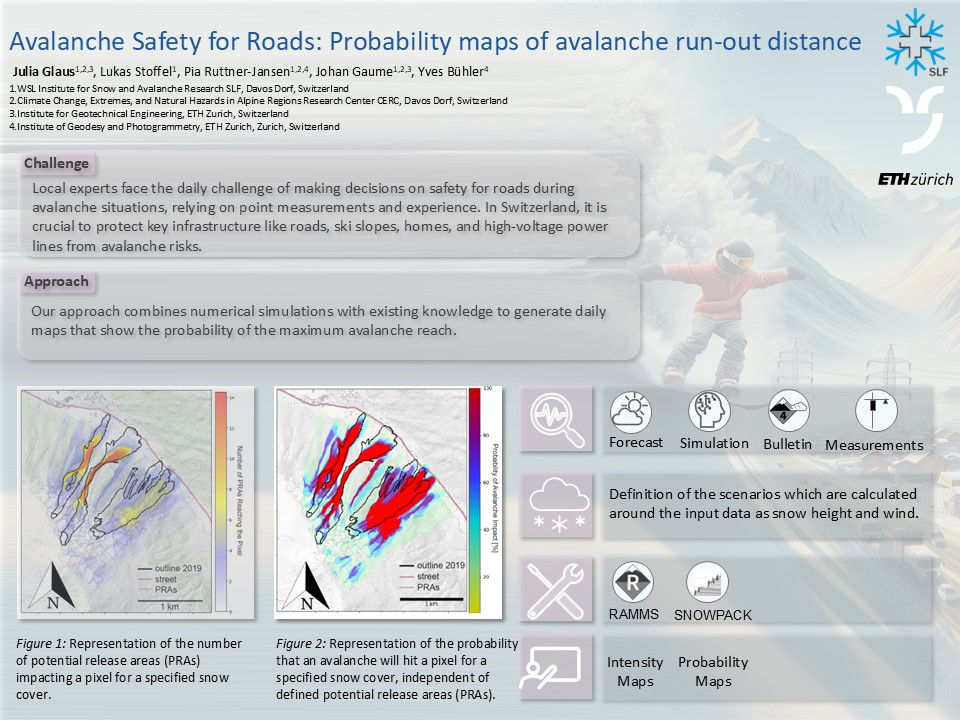In the Swiss Alps, roads leading through avalanche hazard zones need to be assessed on a daily basis during winter by local hazard experts to decide whether crossing by car is still safe. Crucial decisions that may cut off a lifeline or have significant economic consequences must be made by experts based on experience, weather station data, and gut feeling. In this time of change, experienced experts are retiring, job changes are more frequent, and transferring knowledge about specific roads is becoming increasingly difficult. To address this challenge, we aim to provide maps that combine weather station data and avalanche simulations to show how far and with what intensity an avalanche might evolve on a specific day. We will focus on the maximum pressure and height of the avalanche. These maps can give practitioners an additional perspective on the daily situation and provide a compact overview of avalanche danger.
In the first step, we need to identify a simulation tool capable of calculating different types of avalanches, such as wet and cold avalanches. The tool must be able to simulate the dense flow of an avalanche and, if present, the powder cloud. Traditionally, avalanche simulation tools are used for hazard mapping to show the maximum spread of an avalanche. In our case, we need a tool sensitive enough to represent the daily conditions, given by input values as the snow distribution in the avalanche track, the erosion potential and temperature distribution in the snow.
Next, we will analyse an avalanche cycle from 2019 at Braemabühl in Dischma valley, located in Davos, Switzerland. Three cold avalanches were artificially released, and the dense part of all avalanches reached the Dischma while the clouds with high pressure went till the counter slope. Using our system, we will simulate these avalanches using only the weather station data and forecasts from the day before and do the prediction. Since we have photogrammetric measurements of these events taken by a drone flight, snow pits close to the release are and pictures of the powder cloud, we can compare our simulations to the measured dimensions of the avalanches. This unique data set allows a robust assessment of our modelling results.
Given the high uncertainty of input parameters such as snow distribution on the slope, temperature, and release zone location, we will improve the simulation by running multiple simulations per avalanche track with varied input parameters. For the location of the release zones, we take the proposed zones from the large scale hazard indication tool developed at SLF. We will then calculate the probability of the avalanche reaching the road from this set of simulations.
As the data availability for such a tool strongly depends on the region and infrastructure, we calculate two different scenarios: one where we calculate the avalanche runout based on the weather forecast from the evening before and another map based on the automatic weather stations nearby the avalanche track.
Currently, we have identified a suitable simulation tool called RAMMS::EXTENDED that meets our expectations. We have successfully predicted the Braemabühl event and created the first probability maps for that day. The next step is to apply the system to other events and automate the pipeline from obtaining weather station data to simulating avalanches and post-processing the information to generate daily condition-based probability maps.
